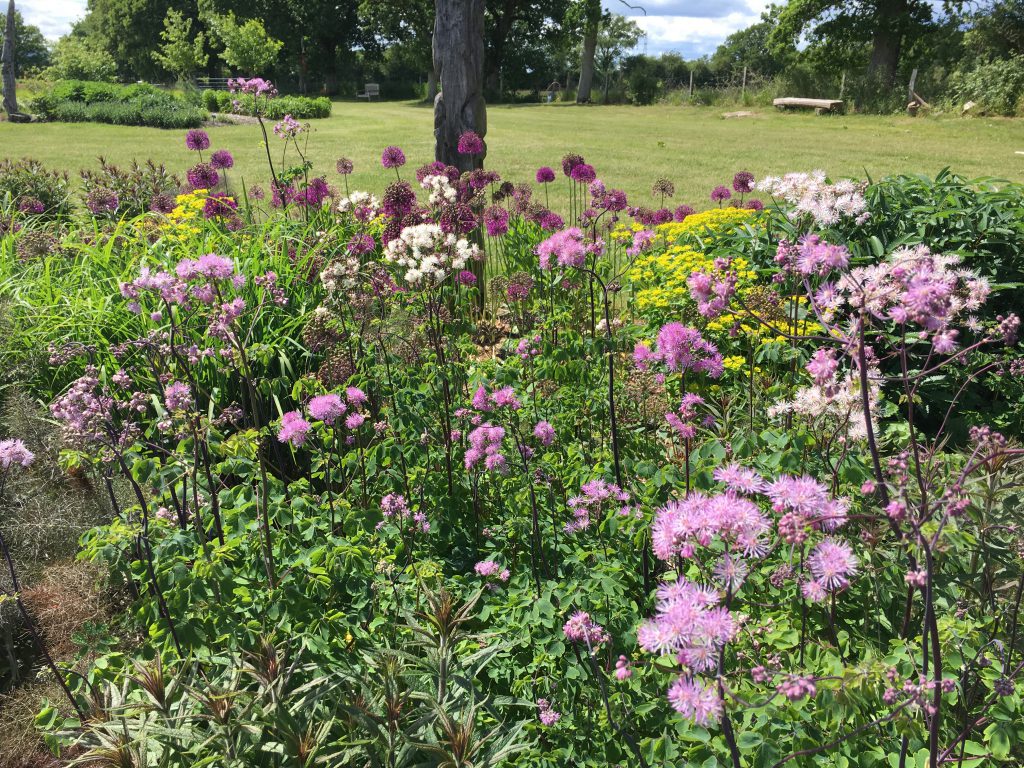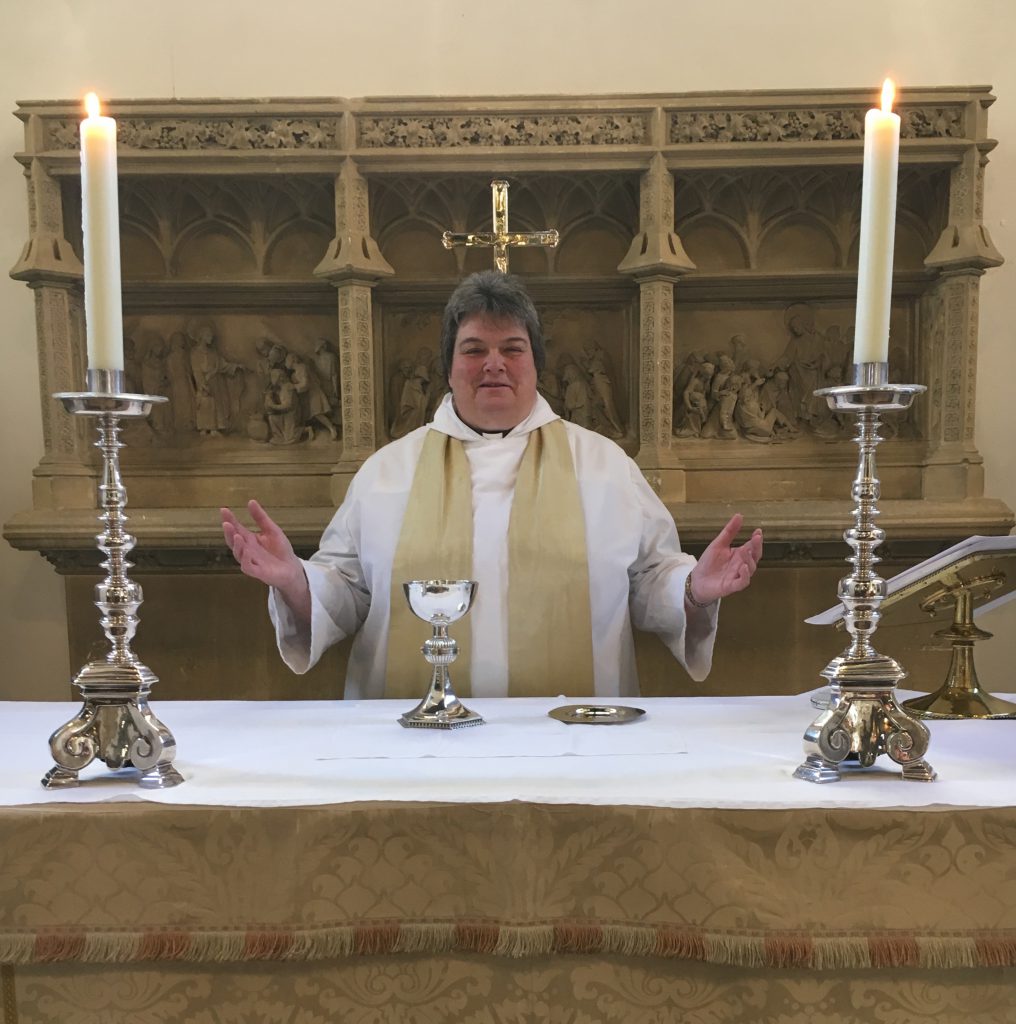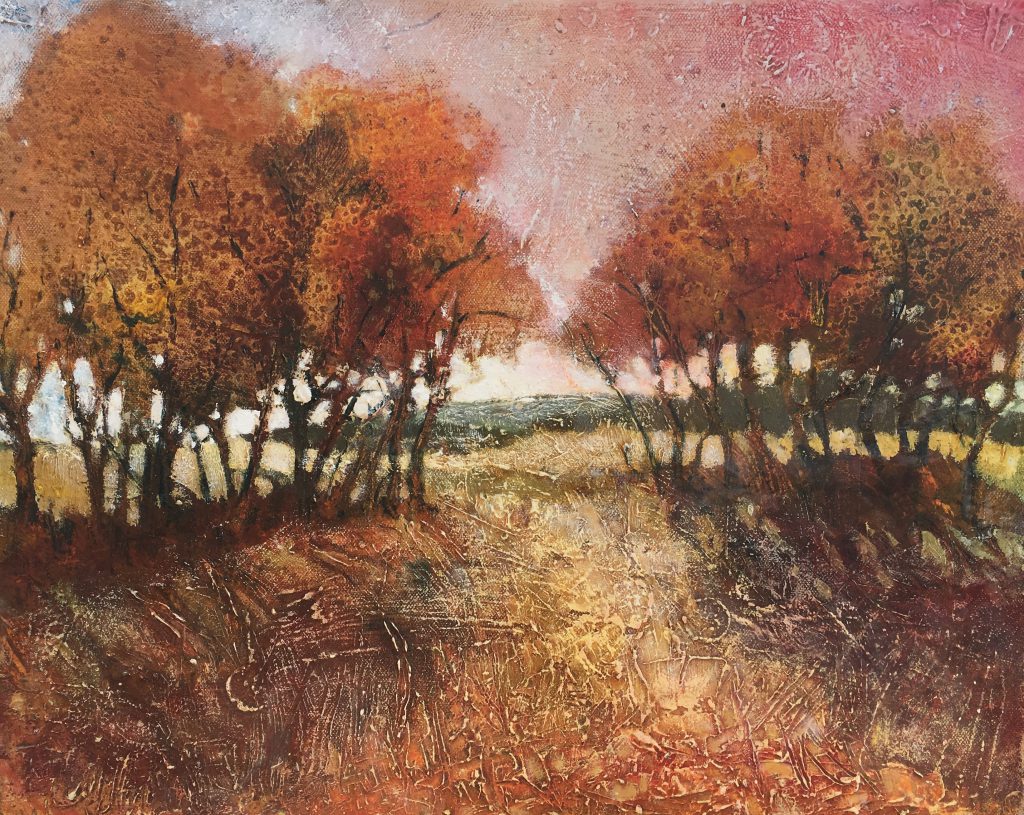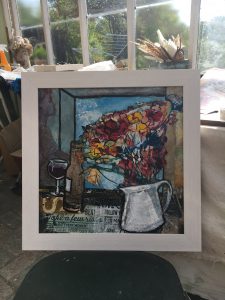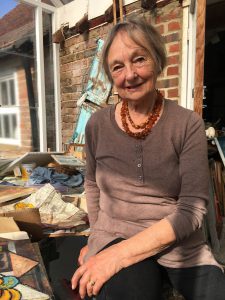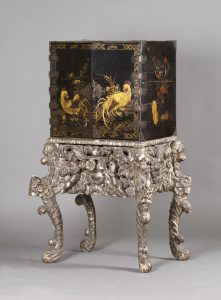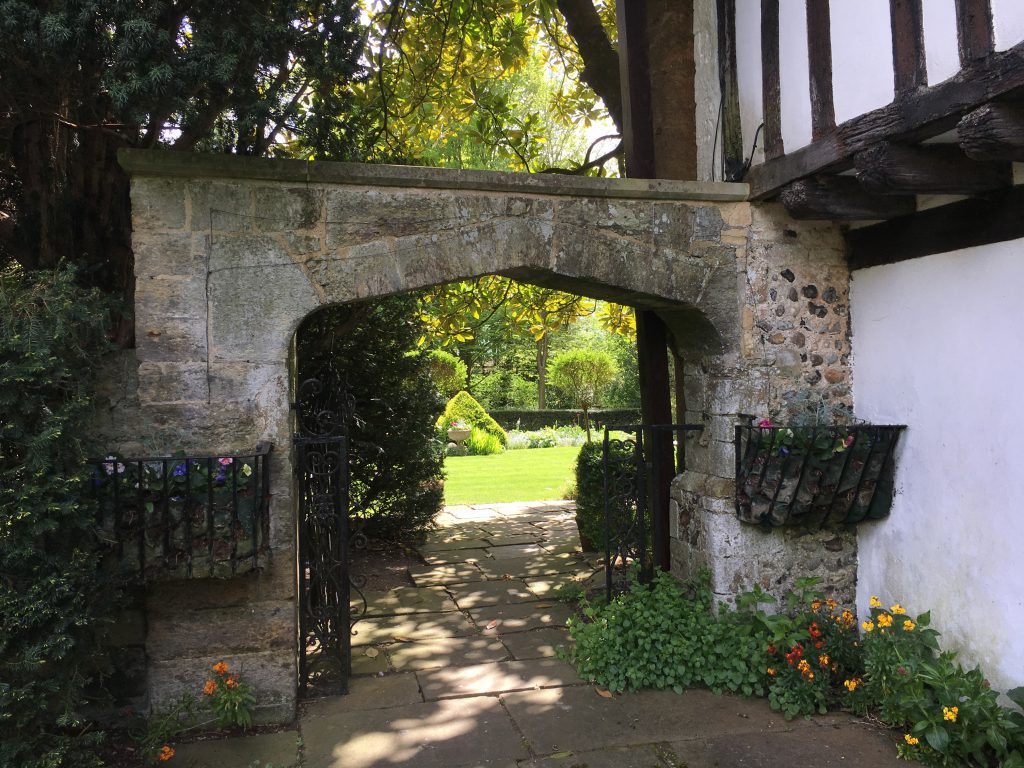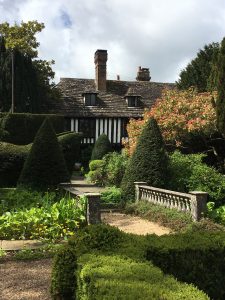I arrive at the Sussex Prairie Garden to find the international garden designers Paul and Pauline McBride and their team preparing for this weekend’s Specialist Plant Fair with the Plant Fair Roadshow which takes place on Sunday 9th June between 12noon and 5pm.
They first opened the Sussex Prairie Garden to the public back in 2009 and ever since Paul and Pauline have worked to provide a platform to bridge garden enthusiasts to leading specialists. Pauline says “The Specialist Plant Weekend is a wonderful opportunity to find top nursery men and women from across the South East of England gathered in one place. It’s rare to be able to speak to experts in their fields about their plants and ask their advice about which plants might be best for you.”
Paul and Pauline’s winter has been spent travelling in Central America seeking fresh inspiration, tending the garden and re-planting the North Mound.
As we sit drinking tea and sampling the café’s wonderful food and cake on the terrace we look out over the emerging swathes of planting in this remarkable garden. Pauline remarks “It’s so wonderful to see it re-emerging again – a hundred shades of green.” Paul adds “And there’s lots of blues at the moment – Alliums and Baptisia from Australia. The garden comes on very quickly at this time of year. We have just enjoyed hosting a number of students from the School of Landscape Architecture at Blois in France. When they arrived a few weeks ago there was almost nothing here and look at it now.”
I comment on the poetry and rhythm of the planting in the garden. Pauline agrees and comments “We do like to repeat the same plants in a border to invite you into the sinuous pathways so you can inhabit the colour, texture and shapes in the planting. The garden is planted in the shape of an Ammonite – a form from nature where there is no beginning and no end – there is some kind of harmony in that.”
It brings to my mind these lines from T.S. Elliot’s poem ‘Little Gidding’ which resonate with Pauline:
‘We shall not cease from exploration
And the end of all our exploring
Will be to arrive where we started
And know the place for the first time.
Through the unknown, unremembered gate…’
She responds “There is a circular sort of thing to the garden. We’re referencing the Sussex landscape that surrounds us – Chanctonbury ring over there in the distance and the sensuous undulations of the Downs.”
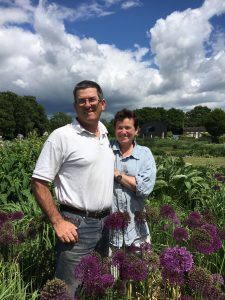
Alongside the specialist nurseries you must not miss out on Paul’s Pick of the Prairie with all the plants you might need to create your own prairie borders.
An afternoon of plant shopping and cake against the background of the beautiful Sussex Prairie Garden – what could be better – you must treat yourselves, I hope to see you there!
This festival of plants will be held this coming Sunday 9th June, 12noon to 5pm at Sussex Prairies, Morlands Farm, Wheatsheaf Road, Henfield, West Sussex, BN5 9AT. To find out more about the gardens and this event visit www.sussexprairies.co.uk or telephone 01273 495902.
By Rupert Toovey, a senior director of Toovey’s, the leading fine art auction house in West Sussex, based on the A24 at Washington. Originally published in the West Sussex Gazette.
